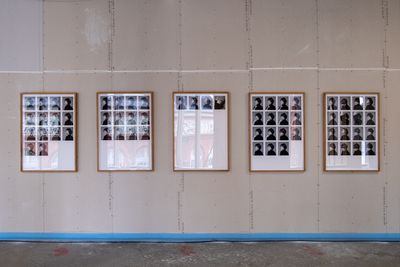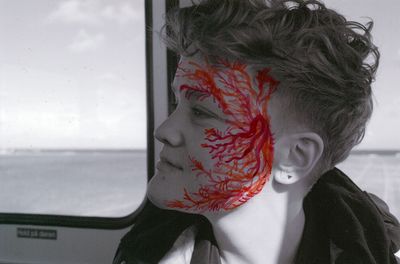Soft
Getting to Know Your Hands
Amazing Grace
Bridge
Release - Grid #1-15
Release - Performance
Headscapes
Headache
Parallax
(I)
Progression><Regression
The past- present- future-paradox
Headache Paintings
Headache Prints
Chronic Pain
You do not talk ill of those who are not present
Progression><Regression
Unlearning Pain
Unlearning Residency
1770 Hours of Sunshine
Funenzine
Sunshine over Rønnerne
Sunshine over Scaw Spit
1844 hours of sunshine
Headscapes2018
Five large (1:1) lenticular portraits with painted representation of the mind. The portraits are made for the Triangle Area, Middelfart Municipality, Psychiatry in Southern Denmark and Middelfart Museum and exhibited at the festival 'Sindssyg God Søndag' at Psychiatric Museum, Middelfart, 2018
Five large (1:1) lenticular portraits with painted representation of the mind. The portraits are made for the Triangle Area, Middelfart Municipality, Psychiatry in Southern Denmark and Middelfart Museum and exhibited at the festival 'Sindssyg God Søndag' at Psychiatric Museum, Middelfart, 2018.
Lenticular portraits; when you see the image from one angle, you see a normal studio portrait of the person, when you see it from another angle, you see their mind painted on top of the images. In this way there is an interaction between the artwork and the viewer, sometimes you see the image of the mind, other times you don't, just like we shift between being aware and unaware of our own and others thoughts and feelings as we go about everyday life.
When we talk about mental health, vulnerability and feelings, we become uncertain and afraid of saying the wrong thing. The language we use to talk about mental health is often the language of diagnosis. It gives us a common language to talk about the tough aspects of being human, but it lacks personal perspective. If we are to come closer to an understanding of the experience of the individual, we need to find new ways of sharing feelings and mental vulnerability.
Katrine Skovsgaard has created the artwork ‘Headscapes’ based on interviews with people who all have experiences with mental illness. The conversations have led to a process of artistic co-creation, where Skovsgaard takes photographic portraits on which the portrayed individual then paints a free representation of their mind on their own portrait. Skovsgaard explores whether visualisation of mental illness has the potential to generate empathy; whether the act of making something visible can generate an intuitive interpersonal understanding.
The work thus both focuses on and creates images of an issue that is otherwise invisible and taboo. Fundamentally, the work challenges the dominant, creating artist subject, as Skovsgaard enters collective artistic processes renouncing parts of the aesthetic creation.
How do you visualse parts of your experience, that is invisible to everyone else but you?
Try it yourself: Through simple techniques and exercises you can learn to translate feelings and find ways to share them with others. At the exhibition you could attend a workshop with exercises in visualising your mind. Everyone can express their feelings visually.
Thank you to EN AF OS






















